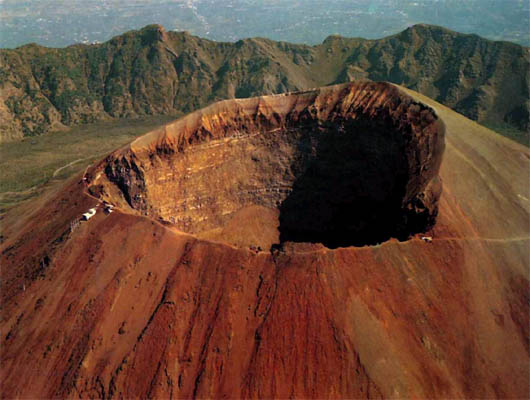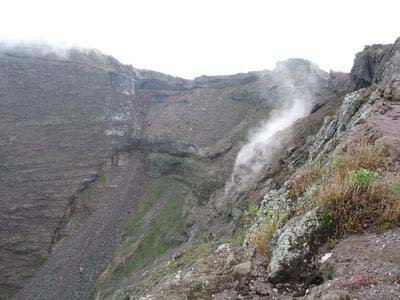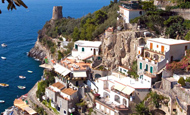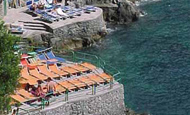VESUVIUS

Today two million people live in the immediate vicinity of Mount Vesuvius. This mountain has erupted more than 50 times since the eruption in 79 A.D., when it buried Pompeii and its sister city, Herculaneum. After Pompeii was buried and lost to history, the volcano continued to erupt every 100 years until about 1037 A.D., when it entered a 600-year period of quiescence. In 1631, the volcano killed an additional 4000 unsuspecting inhabitants. It was during the restoration after this eruption that workers discovered the ruins of Pompeii, buried and forgotten for nearly 1600 years. It would take another 300 years for the excavations to reveal the story of Pompeii and Herculaneum. For excellent coverage of Pompeii, Vesuvius, and the continuing narrative of tragic human involvement with nature.
 The
picture to the left shows Mount Vesuvius as seen from the recently excavated ruins of
Pompeii. Vesuvius is about 5 miles away. Try to imagine huge, billowing, gray-black clouds
like those at Mount St. Helens rushing toward you at a hundred miles an hour. That is
probably what the ancient Romans (whose body casts are shown below) saw just before they
were entombed by hot ash.
The
picture to the left shows Mount Vesuvius as seen from the recently excavated ruins of
Pompeii. Vesuvius is about 5 miles away. Try to imagine huge, billowing, gray-black clouds
like those at Mount St. Helens rushing toward you at a hundred miles an hour. That is
probably what the ancient Romans (whose body casts are shown below) saw just before they
were entombed by hot ash.
The picture to the right is a satellite radar image of Mount Vesuvius and its surroundings. Vesuvius is the purplish cone near the center of the image with a prominent summit crater and radiating greenish lava flows. This is not a true color image. Vesuvius stands in the middle of a much larger and older eroded cone called Mount Somma, about half of which is still visible around the east side of Vesuvius. The rectangular docks of the port of Naples are visible against the dark water to the upper left of Vesuvius.










